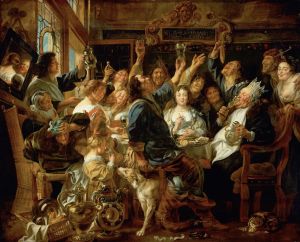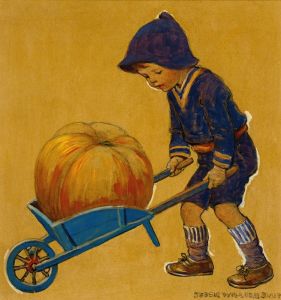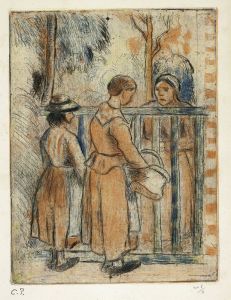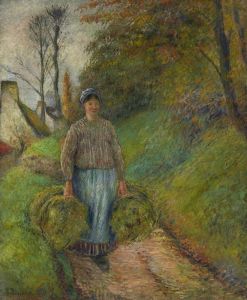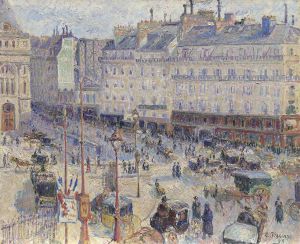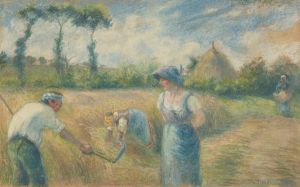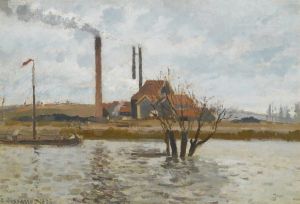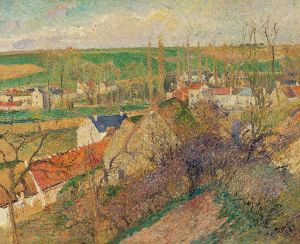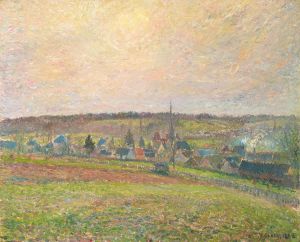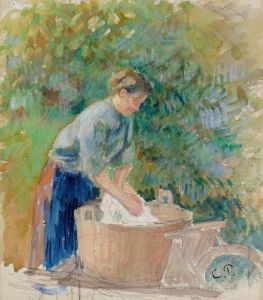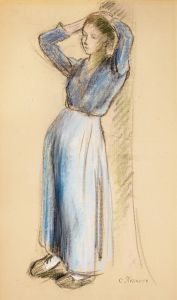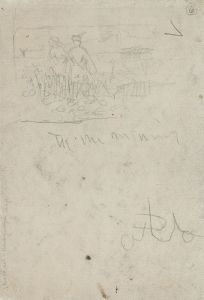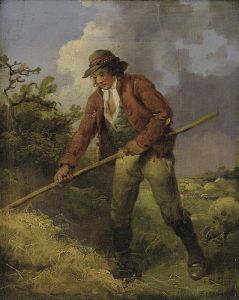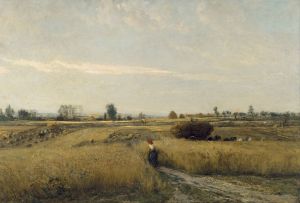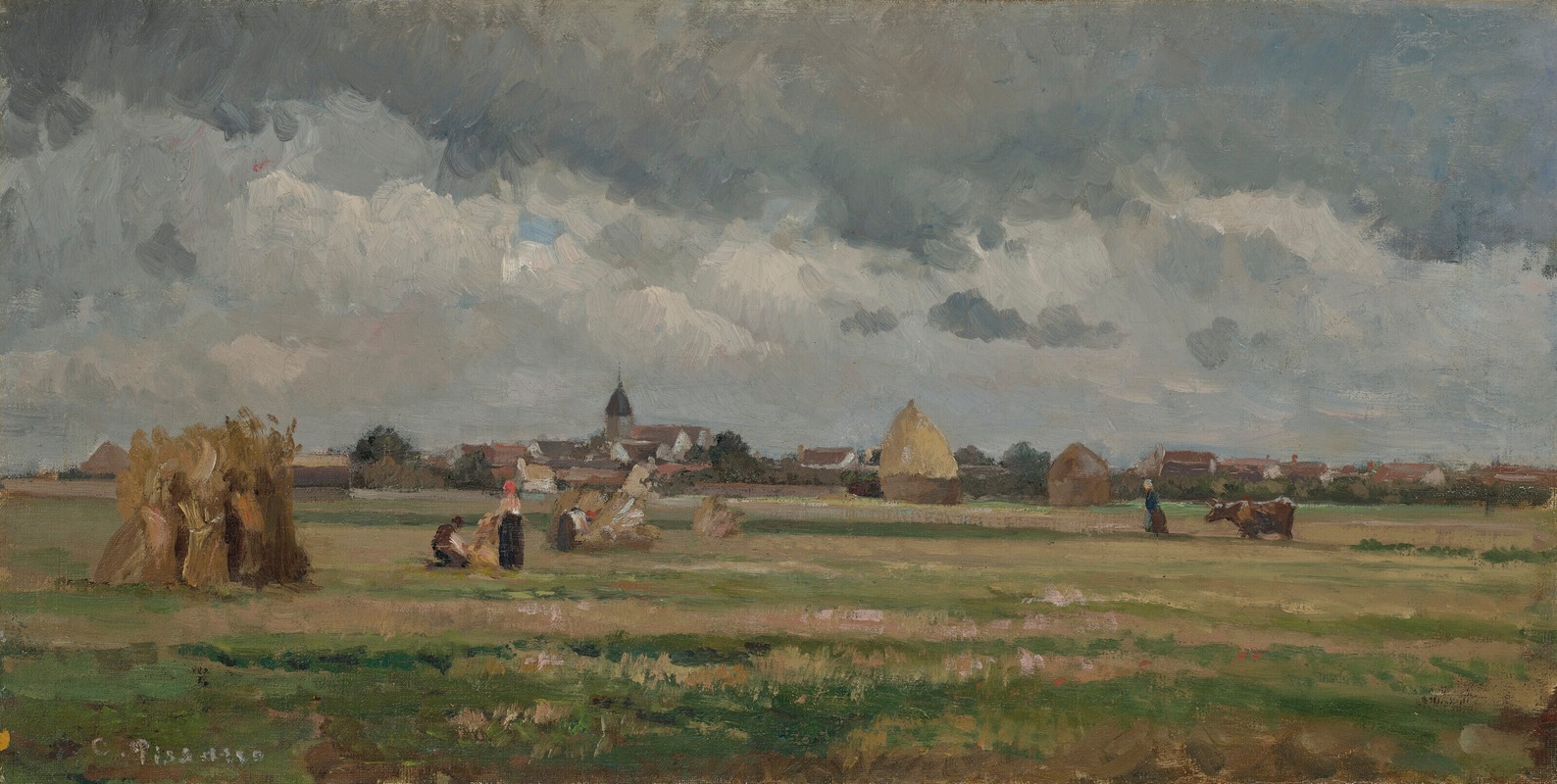
Fenaison
A hand-painted replica of Camille Pissarro’s masterpiece Fenaison, meticulously crafted by professional artists to capture the true essence of the original. Each piece is created with museum-quality canvas and rare mineral pigments, carefully painted by experienced artists with delicate brushstrokes and rich, layered colors to perfectly recreate the texture of the original artwork. Unlike machine-printed reproductions, this hand-painted version brings the painting to life, infused with the artist’s emotions and skill in every stroke. Whether for personal collection or home decoration, it instantly elevates the artistic atmosphere of any space.
"Fenaison" is a painting by the renowned French artist Camille Pissarro, completed in 1887. Pissarro, a pivotal figure in the Impressionist movement, is celebrated for his depictions of rural life and landscapes, often capturing the essence of the French countryside with a keen eye for detail and a profound understanding of light and color.
This particular work, "Fenaison," which translates to "Haymaking" in English, exemplifies Pissarro's dedication to portraying the everyday lives of rural workers. The painting depicts a serene and pastoral scene of laborers engaged in the process of haymaking, a common agricultural activity. Pissarro's choice of subject matter reflects his interest in the lives of peasants and the rhythms of rural life, themes that were central to much of his work.
In "Fenaison," Pissarro employs his characteristic Impressionist style, using loose brushstrokes and a vibrant palette to convey the atmosphere and mood of the scene. The painting captures the play of natural light across the landscape, a hallmark of Impressionist art, which sought to depict the effects of light and atmosphere rather than precise details. This approach allows viewers to experience the warmth of the sun and the gentle breeze that might be present in the scene.
The composition of "Fenaison" is carefully balanced, with figures of the laborers harmoniously integrated into the landscape. Pissarro's use of perspective and spatial arrangement guides the viewer's eye through the painting, creating a sense of depth and movement. The figures are depicted with a sense of dignity and purpose, reflecting Pissarro's respect for the working class and his desire to elevate their everyday activities to the level of fine art.
Pissarro's work during this period was influenced by his interactions with other Impressionist artists, including Claude Monet and Edgar Degas, as well as his interest in the burgeoning Neo-Impressionist movement. While "Fenaison" retains the spontaneity and immediacy of Impressionism, it also hints at Pissarro's exploration of new techniques and ideas, such as the use of pointillism, which he would later incorporate more fully into his work.
Throughout his career, Pissarro remained committed to capturing the beauty and authenticity of rural life, and "Fenaison" is a testament to this enduring focus. The painting not only showcases Pissarro's technical skill and artistic vision but also serves as a historical document, offering insights into the agricultural practices and social conditions of the time.
Today, "Fenaison" is held in high regard as an example of Pissarro's mature style and his contribution to the Impressionist movement. It continues to be studied and appreciated by art historians and enthusiasts alike, who admire its aesthetic qualities and its reflection of 19th-century rural life. Through works like "Fenaison," Camille Pissarro has left an indelible mark on the art world, influencing generations of artists and shaping the course of modern art.





